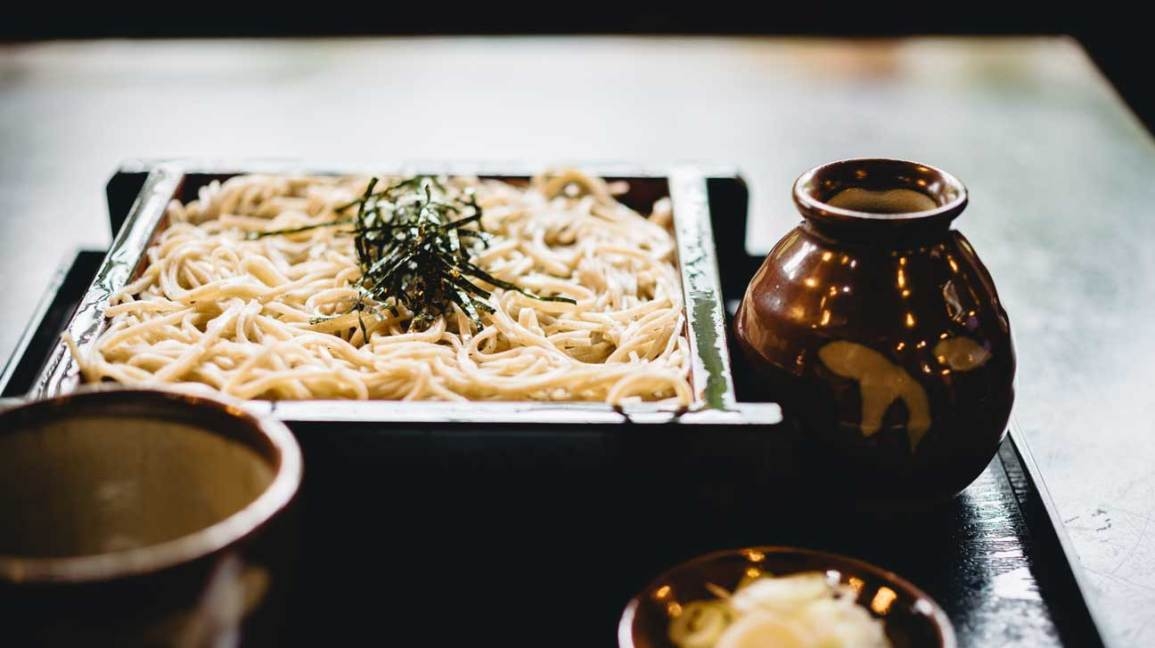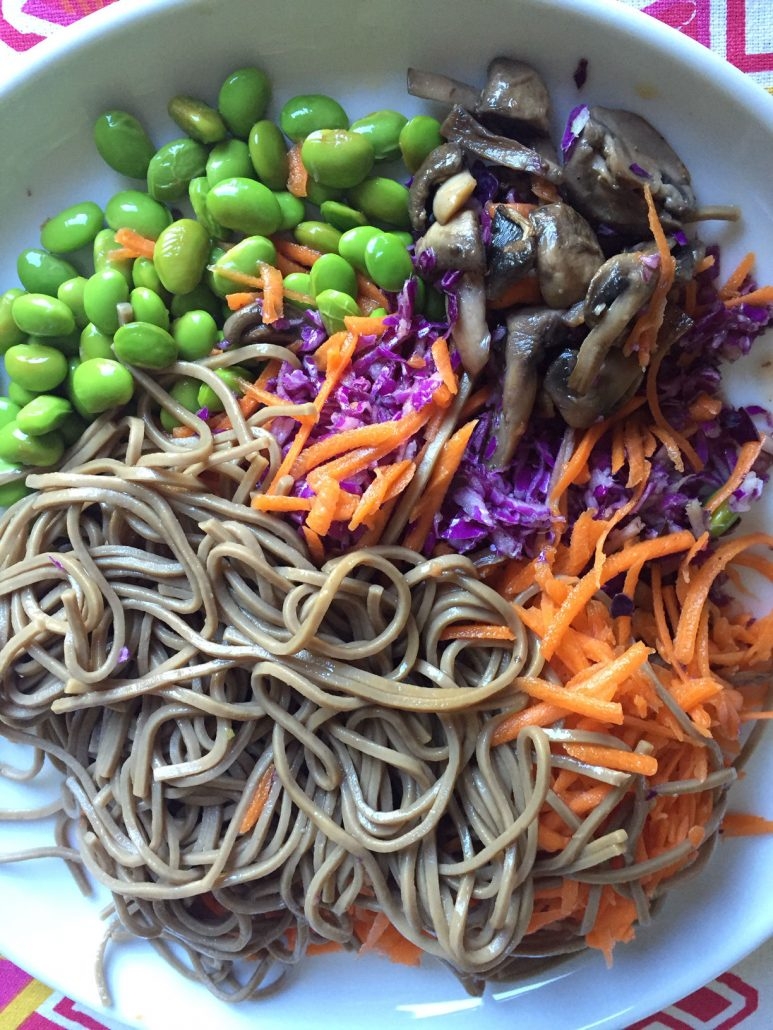Are soba noodles gluten free?
As more and more people are becoming conscious about their dietary choices, the demand for gluten-free products is on the rise. If you’re someone who has a gluten intolerance or sensitivity, you may be wondering if soba noodles are a safe option for you.
Soba noodles, a traditional Japanese dish made from buckwheat flour, have gained popularity in recent years due to their nutty flavor and health benefits. However, many people are still unsure whether they are gluten-free or not.
In this article, we will explore the topic of soba noodles and their gluten-free status. We will look at the ingredients used in soba noodles, discuss the manufacturing process, and examine the potential cross-contamination risks. By the end of this article, you will have a better understanding of whether or not soba noodles are a safe option for those with gluten sensitivities.
What is Gluten?
Gluten is a protein that is commonly found in grains like wheat, barley, and rye. It’s what gives dough its elasticity and allows bread to rise. Unfortunately, for people who are gluten intolerant or have celiac disease, consuming gluten can lead to a variety of health complications. This includes bloating, gas, abdominal pain, diarrhea, and other digestive issues. In severe cases, consuming gluten can even damage the small intestine and lead to malnutrition.

Due to the potential health risks of consuming gluten for people with celiac disease and gluten intolerance, many have turned to the gluten-free diet. This diet requires avoiding foods that contain gluten, including wheat, barley, and rye. While it may seem daunting, there are plenty of gluten-free alternatives available such as gluten-free flours, pastas, and breads. It’s important to note that many foods that are not typically thought to contain gluten, like soy sauce and beer, do actually contain it. As a result, it’s important to carefully read food labels and opt for certified gluten-free options when possible.
Are Soba Noodles Gluten Free?
Soba noodles are a popular Japanese noodle made from buckwheat flour. Buckwheat, despite its name, is actually not a type of wheat and is naturally gluten-free. Therefore, soba noodles that are made solely from 100% buckwheat flour are considered gluten-free.
However, it’s important to note that not all soba noodles are made solely from buckwheat flour. Many soba noodles also contain wheat flour as a filler ingredient, which can contain gluten. It’s important to read the ingredients carefully and double-check if the soba noodles are labeled as “gluten-free” before consuming them.
Aside from being gluten-free, soba noodles also offer several health benefits. They are a good source of protein and dietary fiber, making them a good addition to any balanced diet. They also have an earthy flavor and chewy texture that make them a popular ingredient in Japanese cuisine. Soba noodles can be enjoyed hot in soups and stir-fries, or cold in noodle salads and dipping sauces.
Types of Soba Noodles
Soba noodles are a popular staple in Japanese cuisine, made from buckwheat flour, which gives them their earthy flavor and slightly chewy texture. Soba noodles are versatile and can be served in cold noodle dishes, hot soups, or even in salads. In this article, we will explore the different types of soba noodles, their characteristics, and how they can best be prepared.
There are various types of soba noodles, including juwari soba, hachiwari soba, and soba made from a blend of buckwheat and wheat flour. Juwari soba is made from 100% buckwheat flour and is the most traditional type of soba noodle. It has a slightly nutty flavor and is prized for its delicate texture. Hachiwari soba, on the other hand, is made from a blend of buckwheat and wheat flour.
This type of soba noodle is more commonly found in supermarkets and is more affordable than juwari soba. The wheat flour gives it a lighter color and slightly softer texture compared to juwari soba. Lastly, soba made from a blend of buckwheat and wheat flour is the most common type of soba noodle you’ll find at Japanese restaurants. This type of soba noodle has a milder flavor and is more resilient to overcooking, making it a great choice for beginners.
Traditional Soba Noodles
Soba noodles are a staple food in Japanese cuisine and are considered one of the country’s most popular noodle dishes. The noodles are made from buckwheat flour and wheat flour, which gives them a chewy texture and earthy flavor. Traditionally, soba noodles are served cold with a dipping sauce made from soy sauce, mirin, and dashi broth. However, they can also be served hot in soups and stir-fries.
Soba noodles are a healthy addition to any diet as they are a good source of protein, dietary fiber, and gluten-free grains. They are also low in fat and calories, making them a great choice for those looking for a healthy option. Additionally, buckwheat flour is a rich source of minerals like magnesium, zinc, and iron, making soba noodles a nutrient-rich food.
Soba noodles can be found in most Asian grocery stores, health food stores, and even some mainstream supermarkets. They are easy to prepare, requiring only a pot of boiling water and a few minutes of cooking time. Soba noodles can be eaten on their own as a snack or added to a variety of dishes for added flavor and texture.
Buckwheat Noodles
Buckwheat noodles, also known as soba noodles, have been a staple in Japanese cuisine for centuries. Originating in the northeastern region of Japan, these noodles are made from buckwheat flour, which gives them their distinctive earthy flavor and chewy texture. Buckwheat flour is naturally gluten-free, making soba noodles a great option for those who follow a gluten-free diet or have gluten intolerance.
These noodles are often enjoyed cold with a dipping sauce, but can also be served in hot soups or stir-fry dishes. Their versatility has made them a popular choice in both Asian and Western cuisine. Additionally, soba noodles are a great source of protein and dietary fiber, making them a healthy addition to any meal. Buckwheat grains are also known for their health benefits, such as reducing cholesterol and improving blood sugar control. Soba noodles can be found in health food stores and are widely available in Japanese restaurants around the world.
Rice Flour Noodles
Rice flour noodles, also known as rice vermicelli or rice sticks, are a popular staple in Asian cuisine. These noodles are made from rice flour and water, making them a gluten-free option for those with gluten intolerance or celiac disease.
Rice flour noodles can be found in a variety of dishes, from hot soups to cold noodle dishes. They are commonly used in Vietnamese pho and bun cha, Thai pad Thai and stir-fry dishes, and Chinese stir-fry dishes and spring rolls. These noodles have a slightly chewy texture and a neutral taste, making them a versatile ingredient that can pair well with a wide range of flavors and ingredients.
Additionally, rice flour noodles are a good source of dietary fiber and carbohydrates, providing energy to the body. Plus, they are a healthy alternative to wheat-based noodles due to their lower calorie content and lower glycemic index. Overall, rice flour noodles are a delicious and nutritious addition to any diet.
Wheat Flour Varieties
Wheat flour is a staple ingredient in many kitchens around the world. It is commonly used in baking bread, pastries, and cakes, as well as in thickening sauces and soups. With so many types of wheat flour available, it can be overwhelming to choose the right one for the recipe you’re making. Here, we’ll explore some of the most common wheat flour varieties and their characteristics.

All-purpose flour is the most commonly used type of wheat flour. It can be used in a wide range of recipes because it contains a moderate amount of protein and gluten. This type of flour is suitable for making bread, cakes, cookies, and pastries. Bread flour, on the other hand, has a higher protein content than all-purpose flour, which makes it ideal for making yeast-based bread.
It allows the bread to rise and develop a chewy texture. Cake flour has a low protein content and is made from soft wheat, which makes it perfect for making delicate and fluffy cakes. It creates a light and airy texture in baked products. Finally, whole wheat flour is made from the whole grain of wheat, including the bran, germ, and endosperm. It has a stronger, nuttier flavor and is a good source of fiber and nutrients. It can be used in place of all-purpose flour in most recipes but may require more liquid and leavening agents due to its denser and heavier texture.
Meet Jaxon Monroe, the culinary enthusiast and food blogger who has taken the online cooking world by storm with his passion for experimenting with flavors. With a sharp eye for detail and an innate ability to create and present dishes in an appealing way, Jaxon’s blog is the go-to for any food lover seeking inspiration.
From BBQ chicken pizza bites to healthy Thai spiced salmon cakes, Jaxon’s recipes draw upon a range of cuisines and flavors, each as tantalizing as the last. But it’s not just about indulgence – Jaxon also shares tips and tricks to help readers improve their cooking skills.
Whether you’re an experienced cook or just starting out, Jaxon’s blog offers valuable insights and creative ideas that will leave you inspired in the kitchen. So why not join the thousands of readers who have already discovered the magic of Jaxon Monroe’s unique take on cooking?